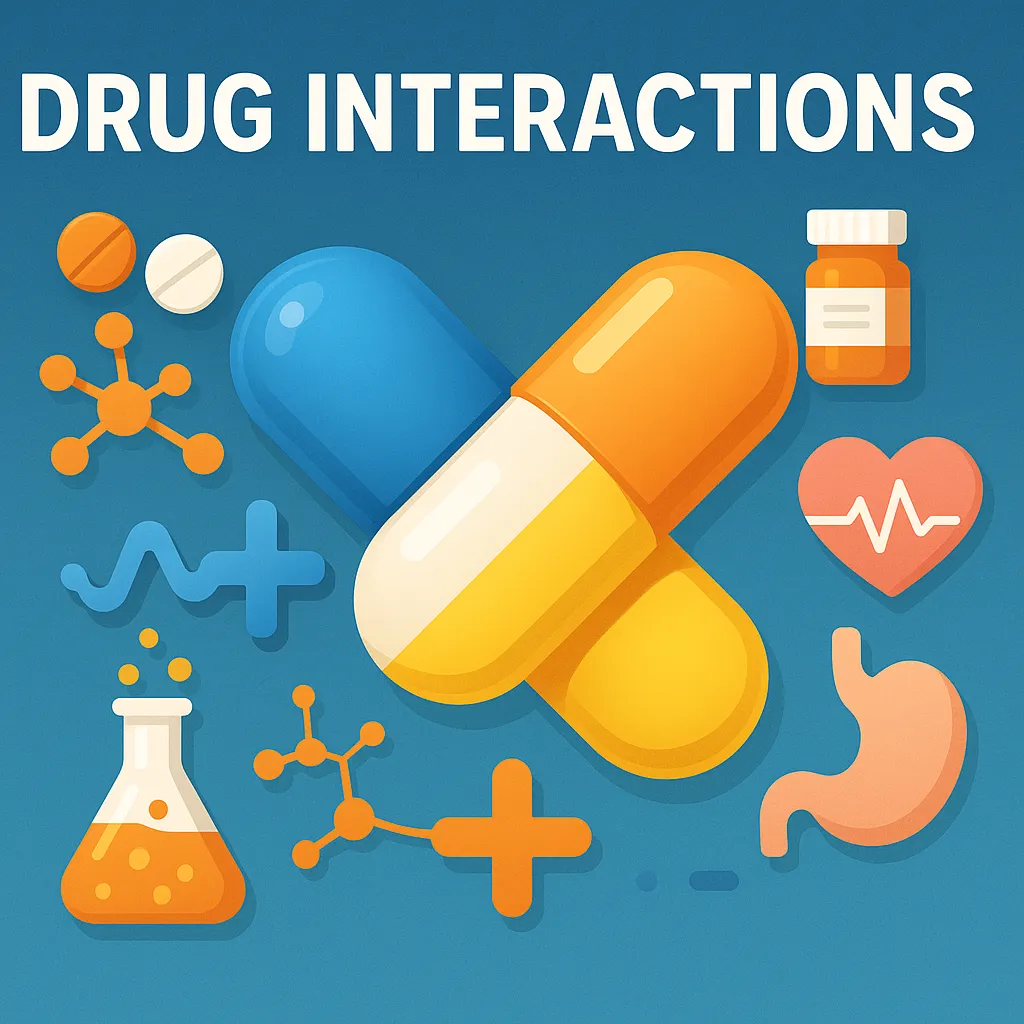Drug interactions occur when one drug affects the action of another, altering effectiveness or causing side effects.
Drug Interactions
- Drug interactions occur when the effect of one drug is altered by the presence of another drug, food, or substance.
- These can be classified as pharmacokinetic or pharmacodynamic.
-
Pharmacokinetic Interactions
- These involve changes in the Absorption, Distribution, Metabolism, or Excretion (ADME) of a drug.
-
Absorption:
- Altered by pH, food, or other drugs
- Example: Antacids reduce tetracycline absorption
-
Distribution:
- Displacement from plasma proteins can increase free drug levels
- Example: NSAIDs displacing warfarin
-
Metabolism:
- Enzyme induction increases metabolism, reducing drug levels (e.g., rifampin induces CYP450)
- Enzyme inhibition decreases metabolism, increasing drug levels (e.g., erythromycin inhibits CYP3A4)
-
Excretion:
- Competition at renal transporters
- Example: Probenecid reduces excretion of penicillin
-
Pharmacodynamic Interactions
- These involve direct or indirect effects on drug receptors or physiological systems.
-
Additive effect:
- The combined effect is equal to the sum of individual effects
- Example: Aspirin and paracetamol for pain relief
-
Synergism:
- The combined effect is greater than the sum of individual effects
- Example: Sulfonamide and trimethoprim
-
Antagonism:
- One drug reduces the effect of another
- Can be competitive, non-competitive, or physiological
- Example: Naloxone antagonizing morphine
Click Here to Watch the Best Pharma Videos

